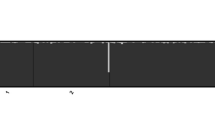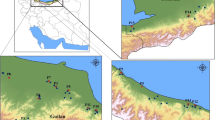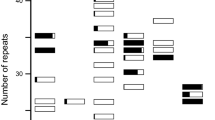Genetic Diversity in Remnant Swedish Hop (Humulus lupulus L.) Yards from the 15th to 18th Century
Hop (Humulus lupulus L.) is a perennial plant cultivated for its use in beer production. The plant is dioecious, and the female plants produce cones containing substances that enhance the taste and durability of beer. Beer was long an essential part of food supply in Northern Europe, and hop has thus been a very important crop during the last 1,000 years. In Sweden, hop cultivation was, by law, mandatory for farmers from 1414 till 1860. Today, Swedish hop cultivation is negligible, but historical remnant hop plants can still be found as feral populations. Using historical maps and documents, we have located ten historical hop yards from the 15th to 18th century where hop plants still persist as now feral populations. Some fifteen plants of each population were sampled and genotyped with ten SSR markers and one marker diagnostic for sex type. In addition, 25 genebank preserved clones of older landraces and cultivars from Europe were genotyped. Genotyping results show abundant clonality and low rates of sexual reproduction within the feral populations. Two of the populations had markedly higher genetic diversity and a higher number of haplotypes, and in these populations a mix of female and male plants was also found. The populations were all clearly differentiated, with no haplotypes shared between populations and little evidence of exchange of genetic material. These results indicate that natural spread and genetic recombination is uncommon or slow in Sweden, and that the feral plants could be remnants of the original historical cultivations. In the assembly of European genebank clones, several clones showed identical genotypes and overall limited genetic diversity. The Swedish populations were in most cases genetically clearly different from the genebank clones. This contrasts with historical records of massive introductions of hop clones from continental Europe during the 19th century and shows that these imports did not replace the original hops being cultivated. A possible better adaption of the Swedish hops and primitive historical breeding are discussed.
Genetisk diversitet i reliktväxter i svenska humlegårdar från 1400- till 1700-talet
Humle (Humulus lupulus L.) är en flerårig växt som odlas för användning i ölproduktion. Växten är tvåbyggare och honplantorna producerar kottar som innehåller ämnen som förbättrar ölets smak och hållbarhet. Öl var länge en viktig del av livsmedelsförsörjningen i norra Europa, varför humle varit en mycket betydelsefull gröda under de senaste 1000 åren. I Sverige var humleodling enligt lag obligatorisk för jordbrukare från år 1414 till 1860. I dag är den svenska odlingen av humle försumbar men förvildade humleplantor från historiska odlingar kan fortfarande hittas. Med hjälp av historiska kartor och dokument har vi återfunnit humlebestånd från tio historiska humleodlingar från 1400- till 1700-talet. Prov togs från ett femtontal plantor av varje population och genotypades med tio SSR markörer och en markör diagnostisk för kön. Dessutom genotypades 25 kloner av gamla lantsorter och sorter från Europa bevarade i genbanker. Resultaten visar på hög grad av klonalitet och låg frekvens av sexuell reproduktion inom populationerna. Två populationer hade markant högre genetisk diversitet och ett större antal haplotyper, i dessa populationer förekom också en blandning av han- och honplantor. Populationerna var alla tydligt differentierade från varandra och inga haplotyper förkom i mer än en population, vilket påvisar lågt utbyte av genetiskt material. Dessa resultat tyder på att naturlig spridning och genetisk rekombination är ovanligt eller sker långsamt i Sverige. Analysen av de europeiska klonerna från genbanker visade att flera kloner hade identiska genotyper och totalt sett begränsad genetisk diversitet. De svenska populationerna var i de flesta fall genetiskt klart särskiljbara från genbanksklonerna. Detta resultat kontrasterar mot informationen i historiska dokument som beskriver massiv introduktion av humlekloner från kontinentala Europa under 1800-talet och visar att denna import inte ersatte den humle som tidigare odlats. En möjlig bättre klimatanpassning av de ursprungliga svenska humlesorterna och en eventuell primitiv historisk förädling diskuteras.





Similar content being viewed by others
Literature Cited
Anonymous. 1858. Svenska trädgårdsföreningens årsskrift. Beckman, Stockholm.
Arnaud-Haond, S., C. M. Duarte, F. Alberto, and E. A. Serrão. 2007. Standardizing methods to address clonality in population studies. Molecular Ecology 16:5115–5139.
Barth, H. J., C. Klinke, and C. Schmidt. 1994. The hop atlas: The history and geography of the cultivated plant. Joh. Barth and Sohn.
Barth, J. 2011. Das große Hopfenaromabuch. Fachverlag Hans Carl GmbH, Nürnberg.
Biendl, M., B. Engelhard, A. Forster, A. Gahr, A. Lutz, W. Mitter, R. Schmidt, and C. Schönberger. 2012. Hopfen. Vom Anbau bis zum Bier. Nürnberg, Fachverlag Hans Carl GmbH.
Bromelius, O. 1687. Lupulogia, eller: En liten tractat, landt- mannen nyttig och nödig, lärandes huru han rätteligen med humle-gårdar omgås, them skiöta, ansa och plantera skal. Stockholm.
Broocman R. 1736. Om humle-gårdar, theras försicktiga anläggande och plantering, rätta ansning och skiötsel, gödande, samt humblans afplockande, torkande och förwarande. Hushåldsbok. Norrköping:177–190.
Cederborgh F. 1861. Praktisk handledning i humlegårdars ändamålsenliga anläggning och skötsel. Expeditionen af Tidskrifts för sv. landtbruket. Stockholm.
Danilova, T. V. and G. I. Karlov. 2006. Application of inter simple sequence repeat (ISSR) polymorphism for detection of sex-specific molecular markers in hop (Humulus lupulus L.). Euphytica 151:15–21.
de Witte, L. C. and J. Stocklin. 2010. Longevity of clonal plants: Why it matters and how to measure it. Annals of Botany 106:859–870.
Evanno, G., S. Regnaut, and J. Goudet. 2005. Detecting the number of clusters of individuals using the software structure: A simulation study. Molecular Ecology 14:2611–2620.
Falush, D., M. Stephens, and J. K. Pritchard. 2003. Inference of population structure using multilocus genotype data: Linked loci and correlated allele frequencies. Genetics 164:1567–1587.
Gaudeul, M., H. K. Stenøien, and J. Ågren. 2007. Landscape structure, clonal propagation, and genetic diversity in Scandinavian populations of Arabidopsis lyrata (Brassicaceae). American Journal of Botany 94:1146–1155.
Granhall, I. 1951. Humle. Pages 627–643 in Å. Åkerman, F. Nilsson, N. Sylvén, and K. Fröier, eds., Svensk växtförädling. Natur och Kultur, Stockholm.
Hagenblad, J., J. Zie, and M. W. Leino. 2012. Exploring the population genetics of genebank and historical landrace varieties. Genetic Resources and Crop Evolution 59:1185–1199.
Hartl, L. and S. Seefelder. 1998. Diversity of selected hop cultivars detected by fluorescent AFLPs. Theoretical and Applied Genetics 96:112–116.
Heimdahl, J. 1999. Växtmakrofossil som indikerar på vikingatida landskapsnyttjande på Björkö. Quaternaria B 17:29.
——— 2002. Environmental reconstructions at a medieval and post-medieval urban settlement in Norrköping. Institutionen för naturgeografi och kvartärgeologi. Stockholms Universitet, Stockholm.
Jakobsson, M. and N. A. Rosenberg. 2007. CLUMPP: A cluster matching and permutation program for dealing with label switching and multimodality in analysis of population structure. Bioinformatics 15:1801–1806.
Jakše, J., Z. Satovic, and B. Javornik. 2004. Microsatellite variability among wild and cultivated hops (Humulus lupulus L.). Genome 47:889–899.
———, Z. Luthar, and B. Javornik. 2008. New polymorphic dinucleotide and trinucleotide microsatellite loci for hop Humulus lupulus L. Molecular Ecology Resources 8:769–772.
Javornik, B., J. Jakše, N. Šteiner, P. Kozak, and A. Čerenak. 2005. Molecular genetic hop (Humulus lupulus L.) research in Slovenia. Acta Horticulturae (ISHS) 668:31–34.
Jonsson, W. 1883. Om den rationela humleodlingens utbredning i Sverige och särskildt inom Elfsborgs län. Vänersborg: Bagge och Petterson.
Karlsson Strese, E. M., O. Karsvall, and C. Tollin. 2010. Inventory methods for finding historically cultivated hop (Humulus lupulus L.) in Sweden. Genetic Resources and Crop Evolution 57:219–227.
———, C. Tollin, and J. Hagenblad. 2012. Den svenska humlens ursprung. Svensk Botanisk Tidskrift 106:165–176.
Korpelainen, H. 1998. Labile sex expression in plants. Biological Reviews 73:157–180.
Lagerås, P. 2003. Aristokratin i landskapet. Paleoekologiska studier i Järrestads järnålder. Riksantikvarieämbetet, Stockholm.
Lance, E. J. 1837. The hop farmer. James Ridgway, London.
McKey, D., M. Elias, B. Pujol, and A. Duputié. 2010. The evolutionary ecology of clonally propagated domesticated plants. New Phytologist 186:318–332.
Molisch, H. 1938. The longevity of plants. Science Press, Lancaster.
Nei, M. 1973. Analysis of gene diversity in subdivided populations. Proceedings of the Natural Academy of Science USA 70:3321–3323.
Patzak, J. 2002. Characterization of Czech hop (Humulus lupulus L.) genotypes by molecular methods. Rostlinná Výroba 48:243–240.
———, P. Vejl, S. Skupinova, and V. Nesvadba. 2002. Identification of sex in F1 progenies of hop (Humulus lupulus L.) by molecular marker. Rostlinná Výroba 48:318–321.
Persson, K., A. S. Fält, and R. von Bothmer. 2001. Genetic diversity of allozymes in turnip (Brassica rapa L. var. rapa) from the Nordic area. Hereditas 134:43–52.
Polley, A., M. W. Ganal, and E. Seigner. 1997. Identification of sex in hop (Humulus lupulus) using molecular markers. Genome 40:357–361.
Pritchard, J. K., M. Stephens, and P. Donnelly. 2000. Inference of population structure using multilocus genotype data. Genetics 155:945–959.
R Development Core Team. 2007. R: A language and environment for statistical computing. Vienna: R Foundation for Statistical Computing. http://www.R-project.org.
Rosenberg, N. A. 2004. DISTRUCT: A program for the graphical display of population structure. Molecular Ecology Notes 4:137–138.
Solé, M. 2003. Factors affecting the genotypic and genetic diversity of the dioecious clonal plant Cirsium arvense at the metapopulation level. Ph.D. thesis, Martin Luther Universität, Halle–Wittenberg.
Spaak, H. 1880. Trädgårdsskötseln jemte några ord om humleplantering. Elfsborgs läns folkhögskolor.
———. 1883. Försök till Handbok i Humleodling.
Stajner, N., J. Jakše, P. Kozjak, and B. Javornik. 2005. The isolation and characterisation of microsatellites in hop (Humulus lupulus L.). Plant Science 168:213–221.
Stebbins, G. L. 1958. Longevity habitat and release of genetic variability in the higher plants. Cold Spring Harbor Symposia of Quantitative Biology 23:365–378.
Suominen, J. 1990. Vild humle i Finland—Hur är det i Sverige? Svensk Botanisk Tidskrift 84:259–265.
Thomas, H., H. M. Thomas, and H. Ougham. 2000. Annuality, perenniality and cell death. Journal of Experimental Botany 51:1781–1788.
Tollin, C. 2004. Pages 191–208 in H. Pallang, H. Snövall, M. Antrop, and G. Jeltin, eds., When Sweden was put on the map. In: European rural landscapes: Persistence and change in a globalising environment. Kluwer Academic Publishers, Netherlands.
——— and E-.M. Karlsson Strese. 2007. Humlen. Nordupplands karaktärsväxt. In: Arkeologi E4 Uppland—studier, eds. E. Härthner-Holdar, H. Ranhed, and A. Seiler, 685–696. Uppsala, Sweden: Riksantikvarieämbetet UV GA.
Unger, R. W. 2004. Beer in the Middle Ages and the Renaissance. University of Pennsylvania Press, Philadelphia.
Wedelsbäck Bladh, K., E. Liljeroth, G. Paulsen, F. Yndgaard, and A. Kolodinska Brantestam. 2013. Genetic diversity in Nordic horseradish, Armoracia rusticana, as revealed by ALFP markers. Genetic Resources and Crop Evolution. doi:10.1007/s10722 -013-0042-9.
Acknowledgments
This work was funded by the Royal Swedish Academy of Forest and Agriculture (CF Lundström Foundation). The authors are grateful to Staffan Åström and Lage Sandgren for assistance with sample collection, Dr. Clas Tollin at the Swedish National Archives for the historical maps, Jesper Fogelholm for technical assistance, Dr. Per Larsson for literature citing, and Dr. Kristiina Antonius at MTT, Finland, for the SSR analysis. Dr. Elisabeth Seigner at Hop Research Center Hüll, Germany, and Ing. Karel Krofta at Hop Research Institute Co., Ltd., Žatec, Czech Republic, kindly provided plant and DNA material and assisted with nomenclature.
Author information
Authors and Affiliations
Corresponding author
Additional information
Received 2 January 2014; accepted 26 April 2014.
Rights and permissions
About this article
Cite this article
Karlsson Strese, EM., Lundström, M., Hagenblad, J. et al. Genetic Diversity in Remnant Swedish Hop (Humulus lupulus L.) Yards from the 15th to 18th Century. Econ Bot 68, 231–245 (2014). https://doi.org/10.1007/s12231-014-9273-8
Received:
Accepted:
Published:
Issue Date:
DOI: https://doi.org/10.1007/s12231-014-9273-8




